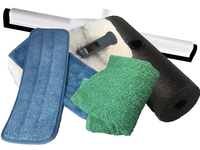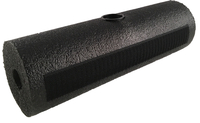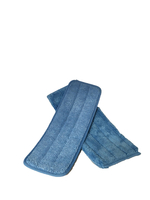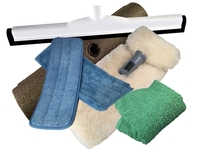Blog
Cleaning Cabinets and Doors
How to clean Cabinets and Doors
The dos and do nots of cleaning cabinets:
1) Never use microfiber on any wood furniture, cabinets, floors, cars etc. Microfiber is made from 80% polyester or plastic and it scratches. Use soft cotton like Mary's Baby Diaper cloths or old white 100% cotton T-shirts.
2) Always test an inconspicuous spot before applying any wood product the first time to a cabinet, door or furniture.
3) If you have been using a product like End Dust or Pledge continue to use that product as mixing it with another wood care product could ruin the finish. Most other products are compatible - follow #2!
4) Avoid using any product that contains petroleum distillates like orange oil products. Distillates are carcinogenic. Fumes, even though they can no longer be smelled, linger for months and bio-accumulate or build up in your body. Type 'MSDS (material safety data sheet) for XYZ' product into a browser. Look for the words aliphatic hydrocarbon, hydrocarbon, mineral oil or petroleum, which are alternative words for petroleum distillates.
How to clean the various finishes on cabinets
Acrylic or high gloss doors: Never use wood treatments including Mary's Wood Care on these finishes as the product will dull and soften the finish. Microfiber destroys these finishes in record breaking time. Use a soft cotton cloth like Mary's ultra-soft Baby Diaper cloth and dampen it with water. Wipe around the door pulls and knobs weekly to remove oil left by fingers, which dulls the finish.
White Washed Cabinets: Check with your dealer on these cabinets as a product like Wood Care can be used on some of the newer ones. Mix a light solution of CleanEz, a highly concentrated green cleaner, or an organic liquid dish soap in a spray bottle with a tablespoon of 'made from grain' distilled white vinegar. Lightly spritz and wipe with a soft cloth.
All other cabinets and doors like bedroom doors need replenishment twice a year. This prevents drying and cracking and maintains that deep rich color and sheen. The best product to use is a beeswax based combination cleaner and conditioner that contains no petroleum distillates or oil like Mary's Wood Care.
Designed to save you money, Wood Care is the only wood treatment on the market that can be diluted with water to spot clean between the twice yearly deep cleaning and conditioning. It restores the color to the wood, helps remove some scratches and greatly improves the grey look caused by steam on bathroom cabinets.
Now let's speed clean these doors and cabinets. Dampen two of Mary's Baby Diapers or two white cotton tee shirts with Wood Care, which is on sale this month along with CleanEz. Two hands are better than one ' right? Right - and faster too. Start at the center bottom of the door or cabinet. The left hand wipes to the left and the right hand to the right. Then come up the sides and back to the middle and include the top of the door. Work your way down the middle and reapply Wood Care if needed. Then return to the top to cover the remaining untreated section of the door. Repeat on the backside and the door is clean in under three minutes for kitchen cabinets.
Spot clean cabinet doors the rest of the year by diluting one part Wood Care with six parts water.
Did you remember to test an out of the way spot first? Good!
About Mary
Mary Findley is a veteran cleaning expert and Founder of Mary Moppins. Mary built the company on the idea that she could create a way to make green cleaning easier, which inspired her to co-author "The Complete Idiots Guide to Green Cleaning" available on Amazon. The Mary Moppins line of specially designed cleaning tools are eco-friendly, yet industrial strength to give you the cleaning power you need to clean quickly and thoroughly.




